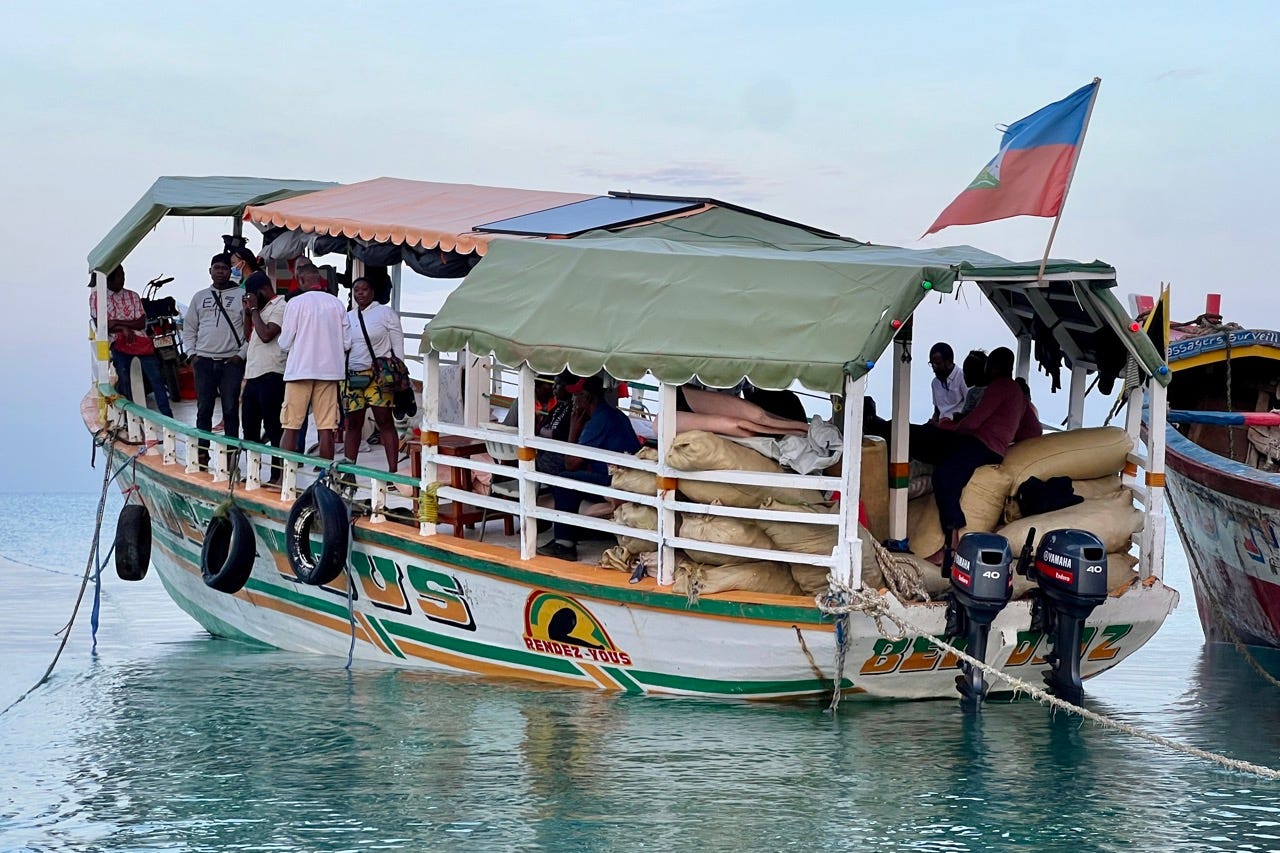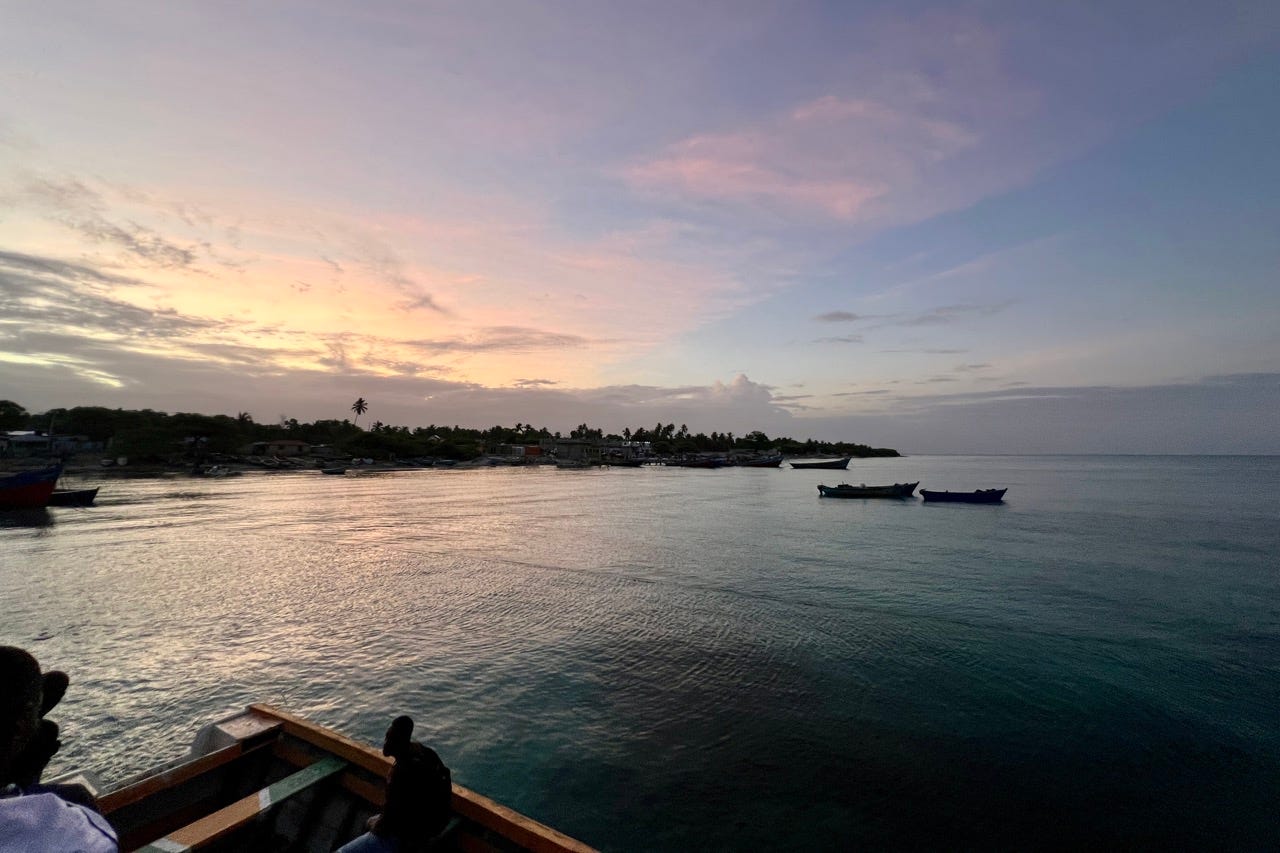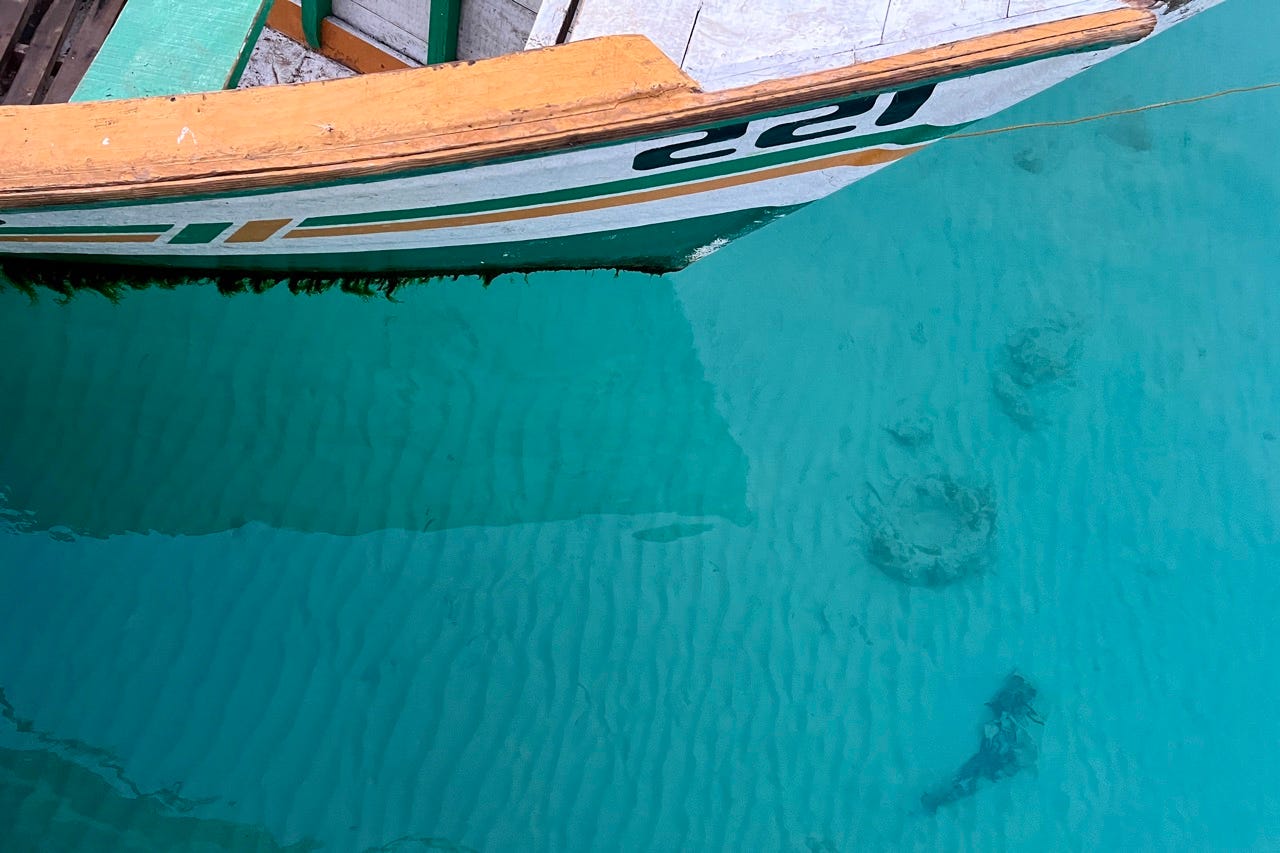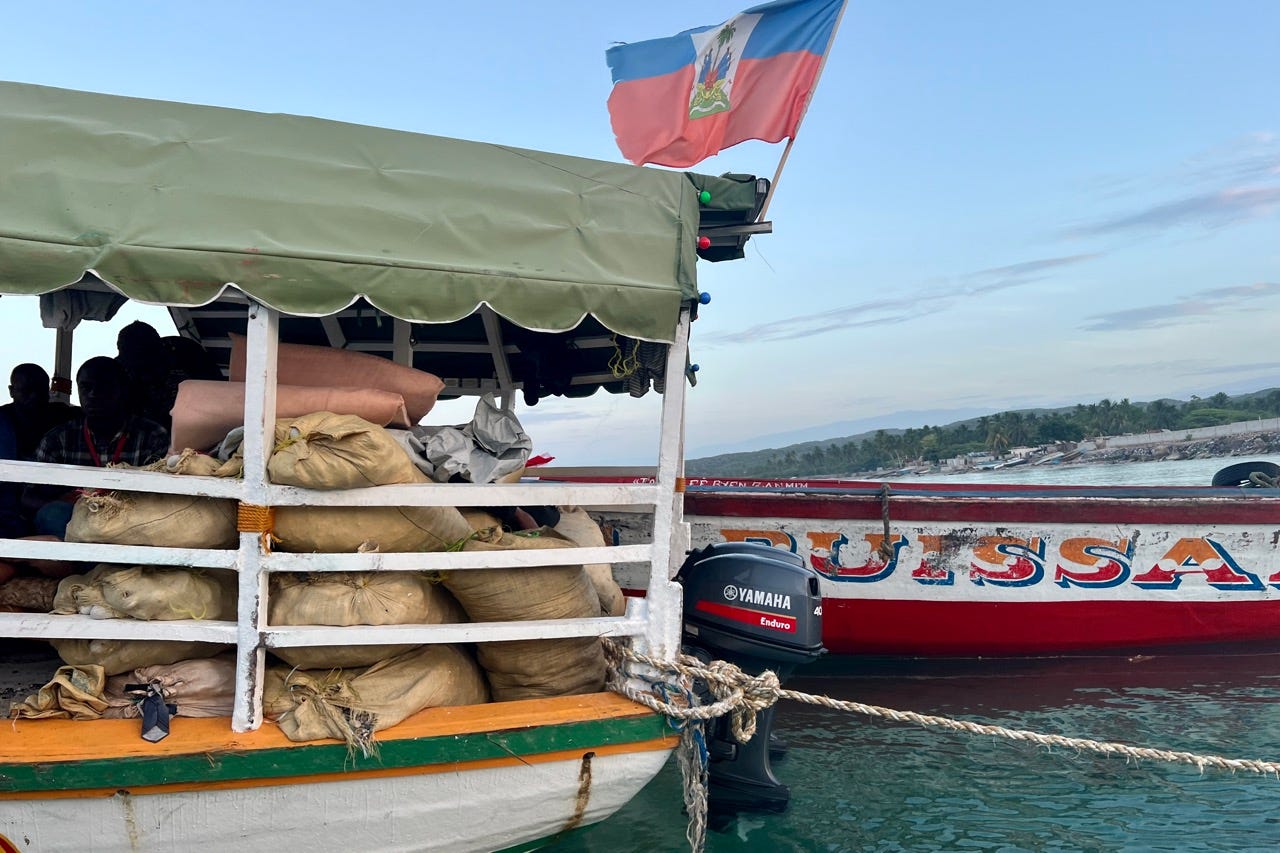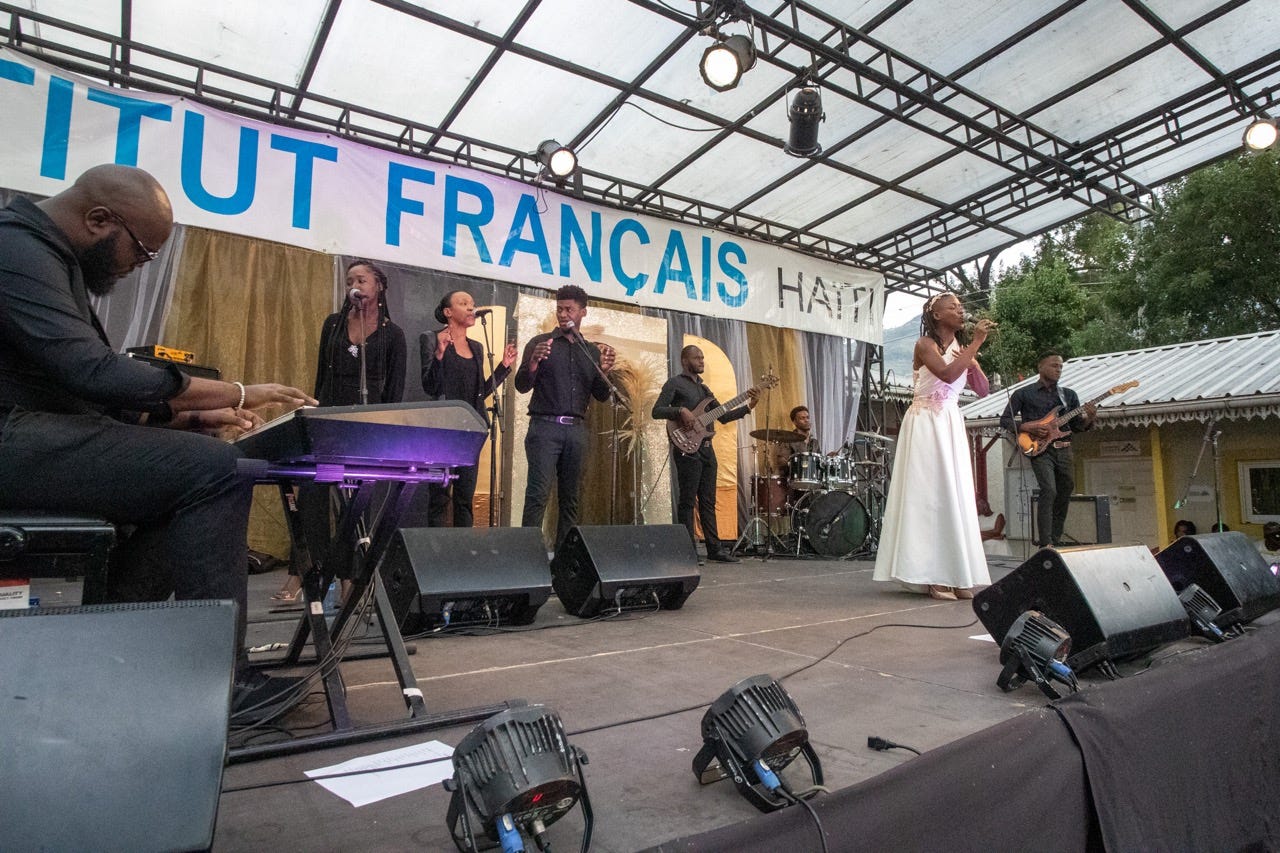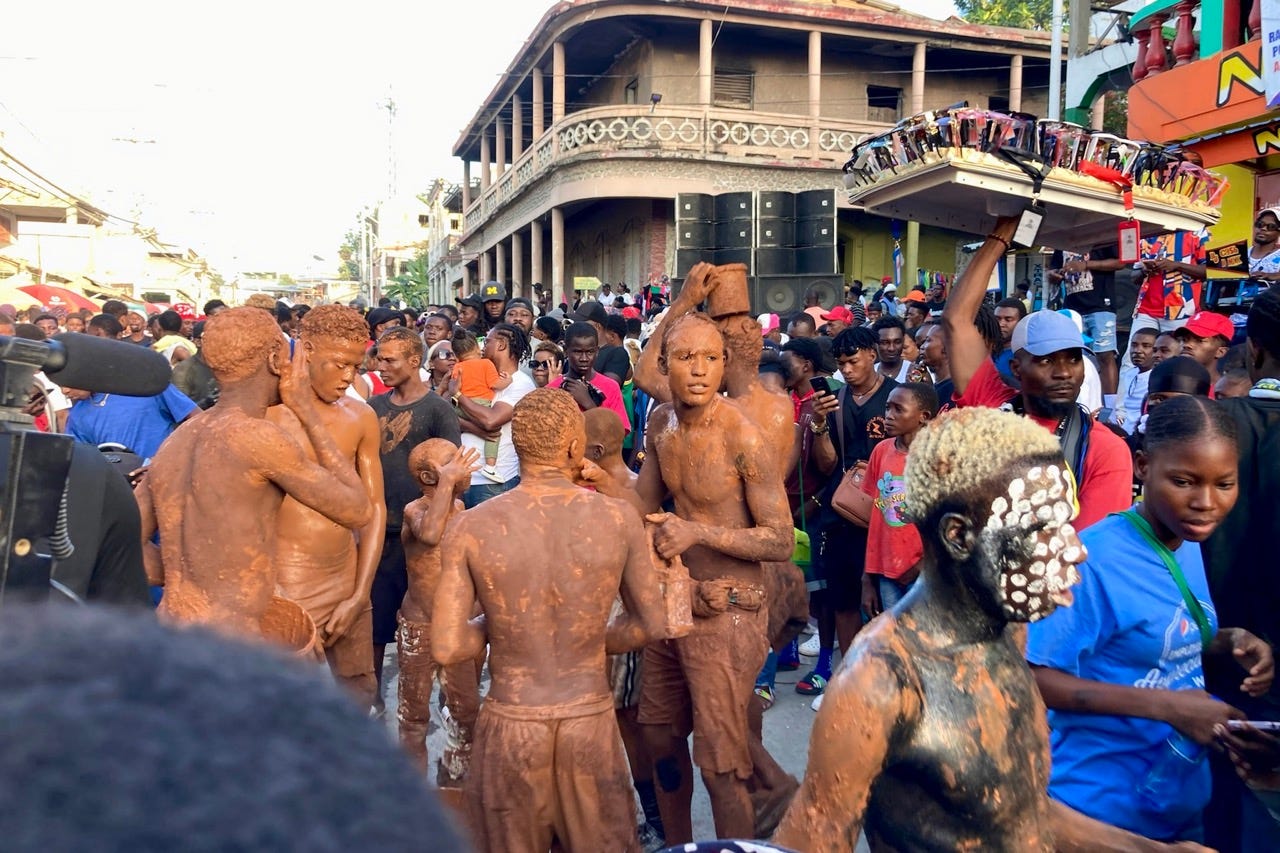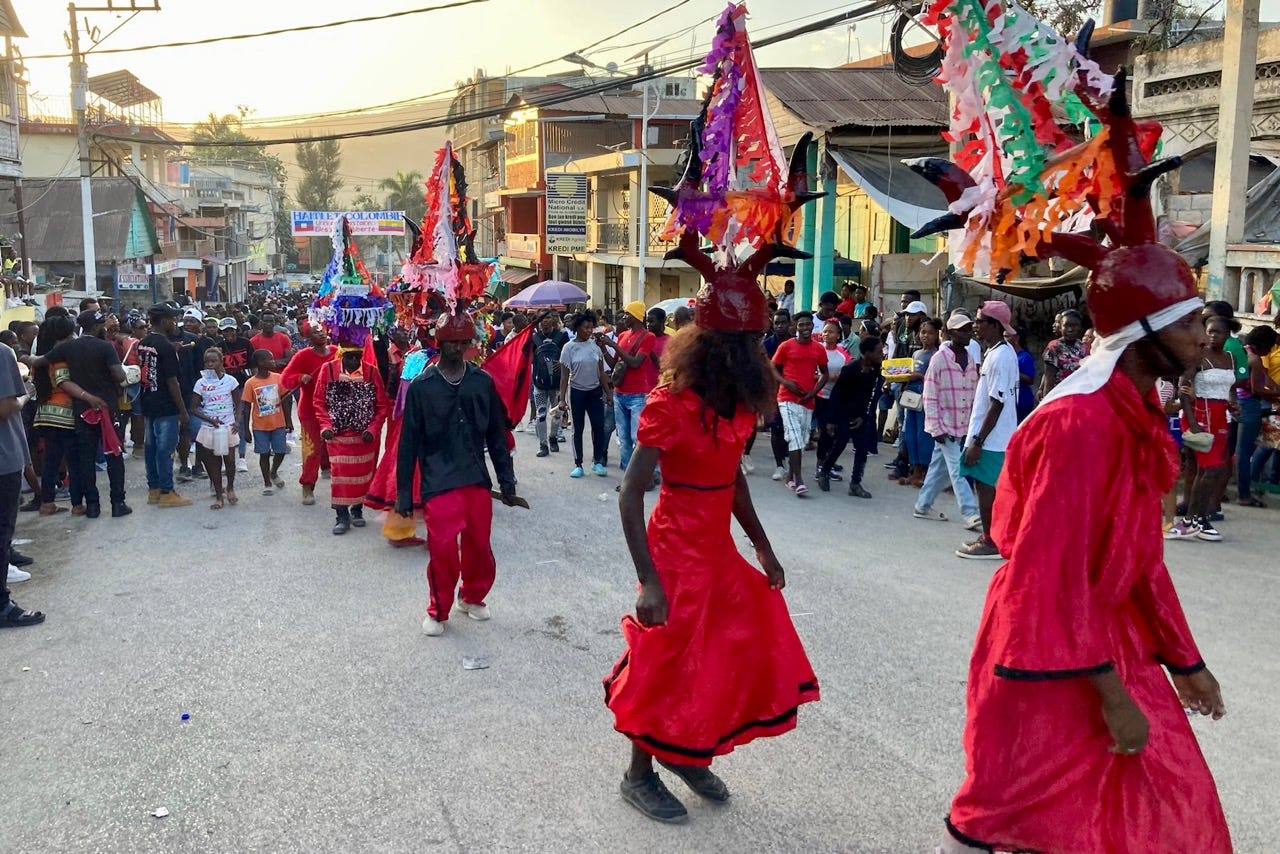#50 - South-East: A Sea Bridge to the Border
Rendez-vous on the waves, vibrant concert by Nehemie Bastien, the spirit of carnival still alive, the latest big hit by Teddy Hashtag on video and Kenscoff resists under the bullets
The trip takes between four and five hours. But it's the only way to quickly connect Marigot to Anse-à-Pitre, the last town before the Dominican border. The luminous Rendez-vous boat, which carries both goods and passengers - including bar service - is the longest of its kind in the South-East department. It has been making the trip twice a week since its inauguration last year. This and more in HAITI WEEKLY #50 by DÈYÈ MÒN ENFO.
Editor's note: More and more journalists are producing video reports in Haiti, and we have decided to highlight them in the Press Reviews section, enriched with this content.
Summary #50
Rendez-vous On the Waves
A Vibrant Concert by Nehemie Bastien
Jacmel: The Spirit of Carnival Lives On
Music Video of the Week : Kimoun ou ye by Teddy Hashtag and L-won
Kenscoff Withstands the Bullets
Press Reviews
Rendez-vous On the Waves
With the Port-au-Prince airport still closed, the boat between Marigot and Anse-à-Pitre, on Haiti's southern coast, is now the fastest way to reach the Dominican Republic from the capital, after a day's drive through the mountains. The brand new Rendez-vous, launched last year, offers greater comfort and safety for passengers.
The colorful Rendez-vous makes two crossings a week between Marigot and Anse-à-Pitre, on the Dominican border. In addition to carrying cargo, it offers a small berth on deck, life jackets for all passengers, on-board bar service and colorful lights to accompany the music.
Until now, the freighters that traveled the route did not offer this level of comfort or safety. Passengers had to sit on their cargo bags for the night voyage.
The port of Marigot is a hive of activity on Thursday evenings. At 10:30 pm, the fritay merchants are doing brisk business. A cargo truck, with JACMEL P.AU.P painted in blue, red, orange and green, is being unloaded.

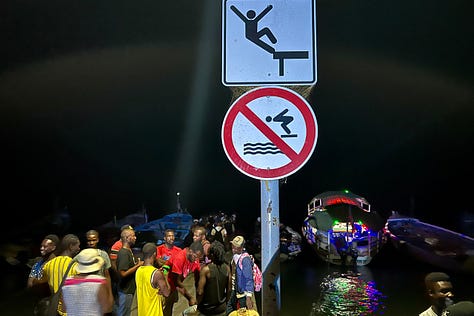
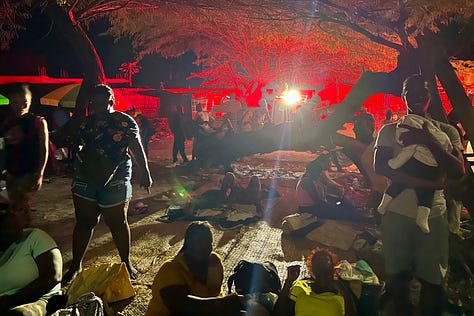
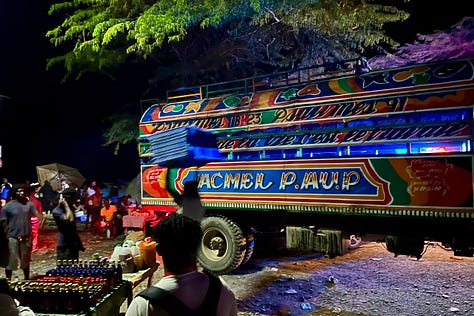
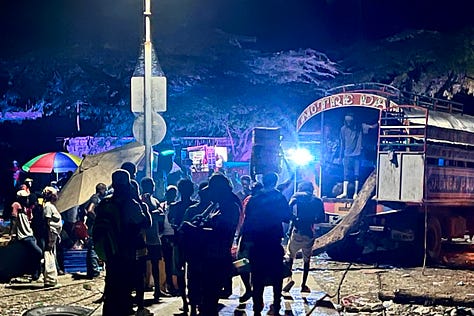

Two evenings a week, under the supervision of the Service maritime et de navigation d'Haïti, a dozen boats set sail for Anse-à-Pitre, a town on the border with Pedernales in the Dominican Republic. Most of them are loaded with goods. They travel together for security reasons.
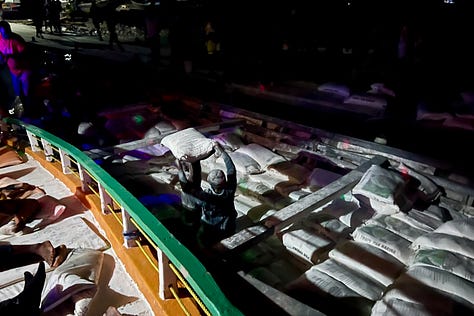
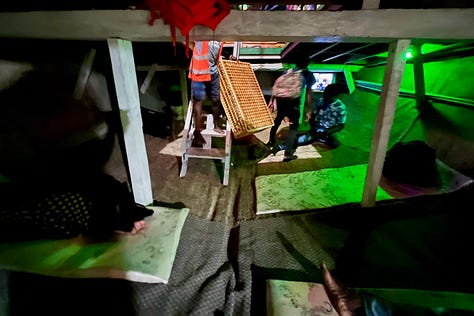
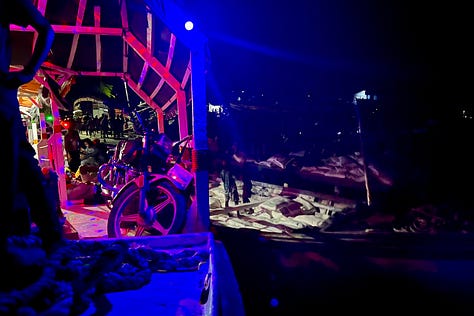
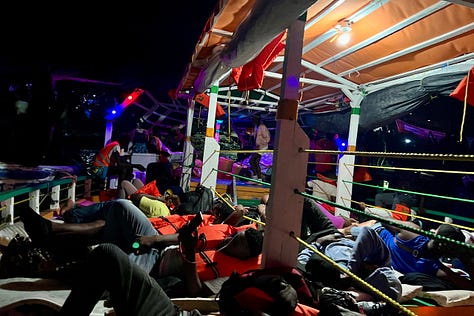
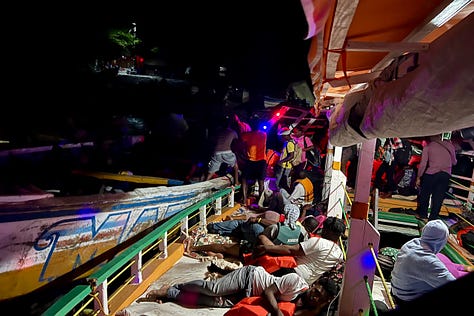
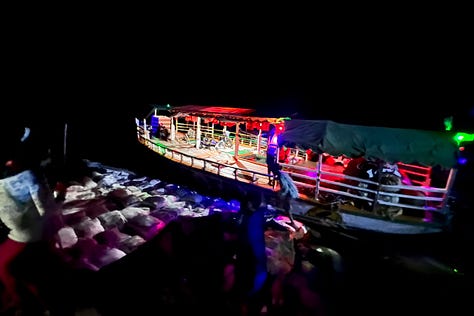
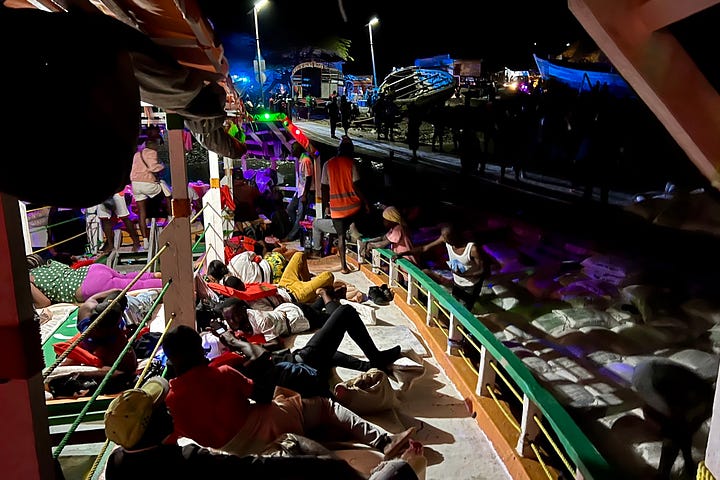
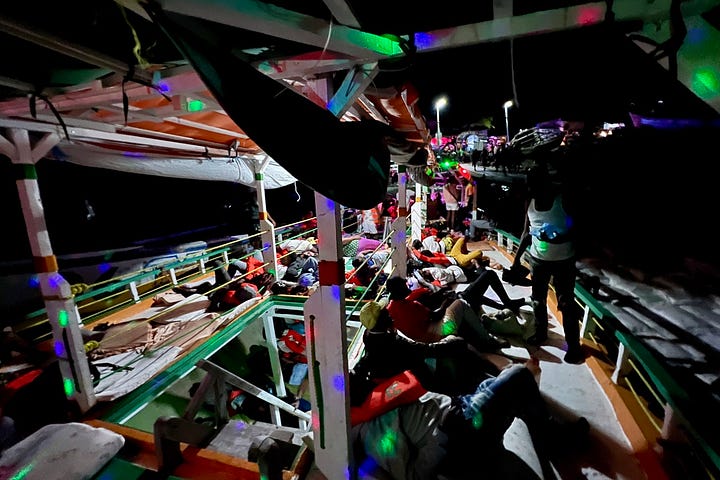
Only the Rendez-vous, the largest and newest of these boats, is also designed for public transportation, although it can also carry cargo. Its owner, who owns a chain of boutiques and a hotel in the region, wanted to improve the quality of travel for passengers.
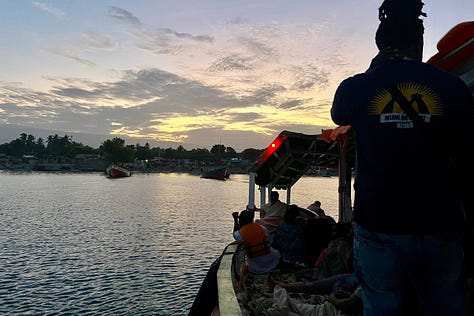
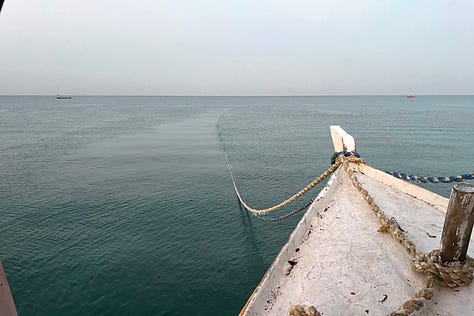

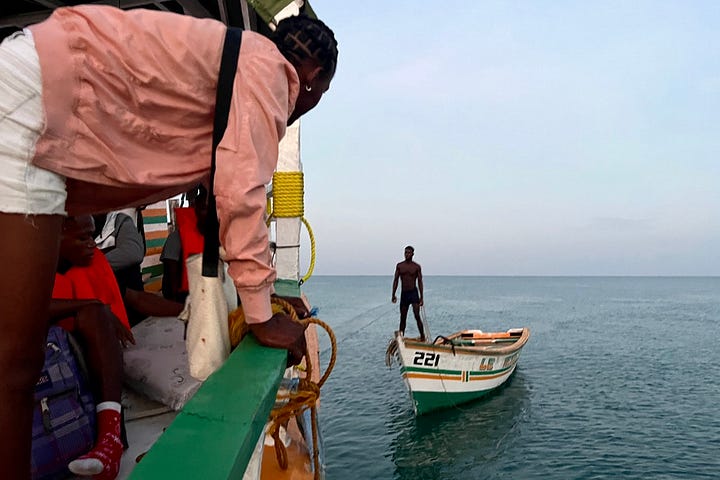
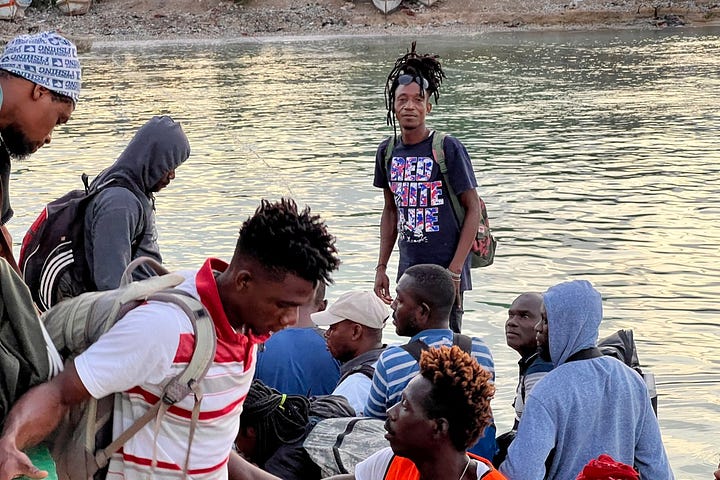
As we passed, compas music played over the speakers as we enjoyed a Prestige beer on deck to the rhythm of the waves. The lights and music stop just after midnight, and most of the passengers lie down on a small mattress, some with their life jackets around their necks.
Short and lulled by the waves, the night ends with a magnificent spectacle: one of the most beautiful sunrises ever. Upon arrival, the brightly painted wooden high-boats are moored away from the main dock, which is undergoing repairs. A smaller boat takes passengers to the vast beach ahead.
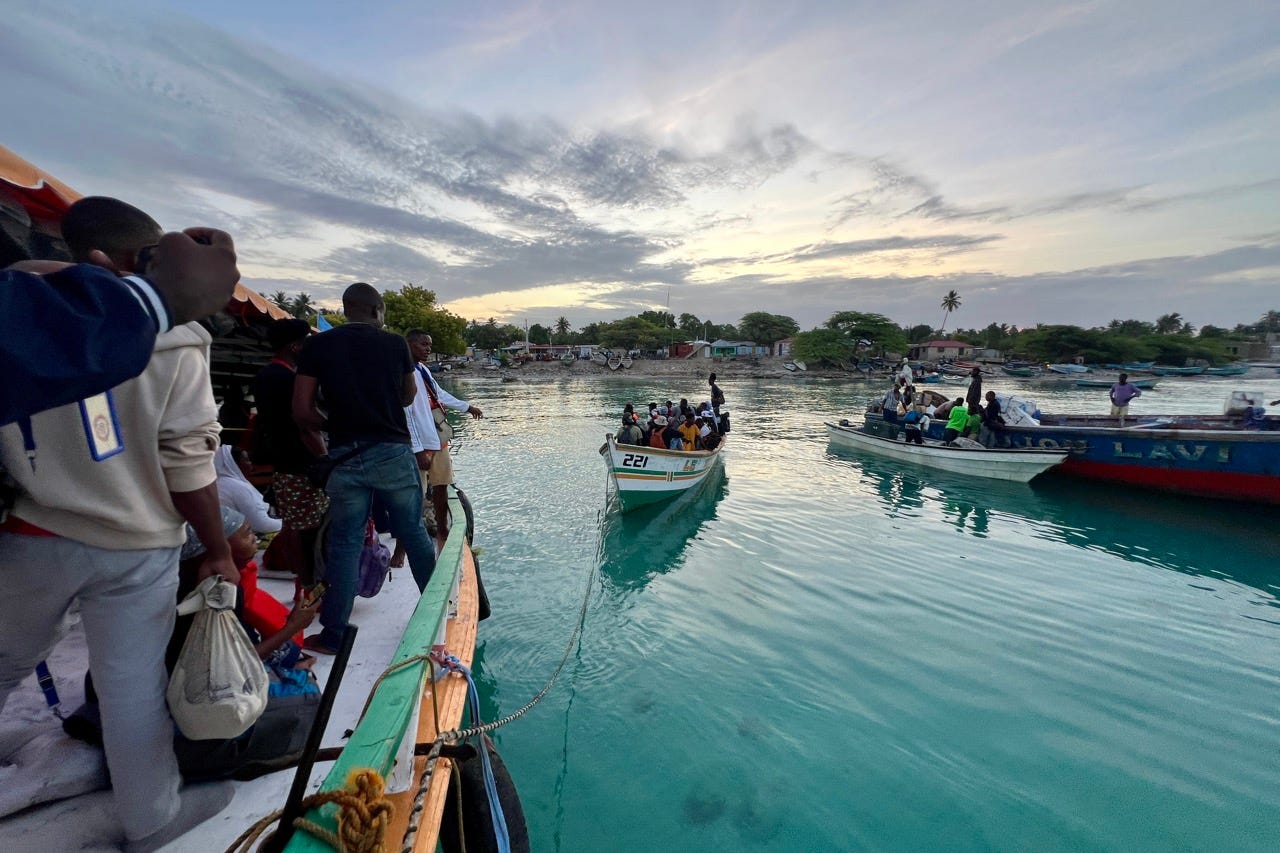
Travelers to the Dominican Republic then have only a few steps to take to reach the border crossing.
The Rendez-vous measures 48 by 19 feet, explains Verdieu “Tidjo” Sainvil, its foreman and builder. “With only wood, the size of the boat is more limited,” he points out, as he makes the trip accompanied by part of the DÈYÈ MÒN ENFO team.
Sainvil specializes in fiberglass in Marigot, a first for the region. He is currently building three more similar boats. He works with an engineer to validate his plans and a carpenter to build the wooden structure. The entire structure is then covered with fiberglass, which makes the boat more watertight and easier to glide on the water, while also allowing longer boats to be built.
“Without cargo, the Rendez-vous can hold 400 people,” he adds. On our trip, there were maybe a hundred of us on board.
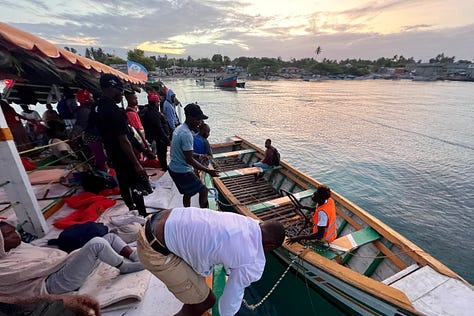

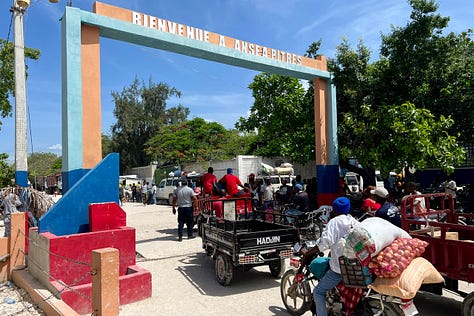
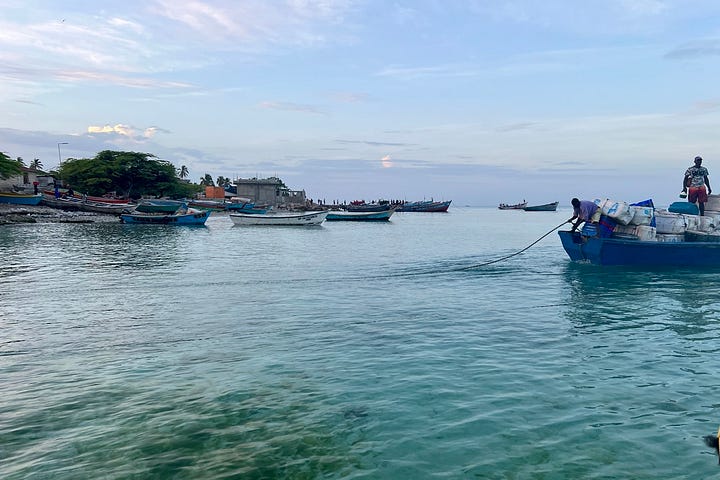
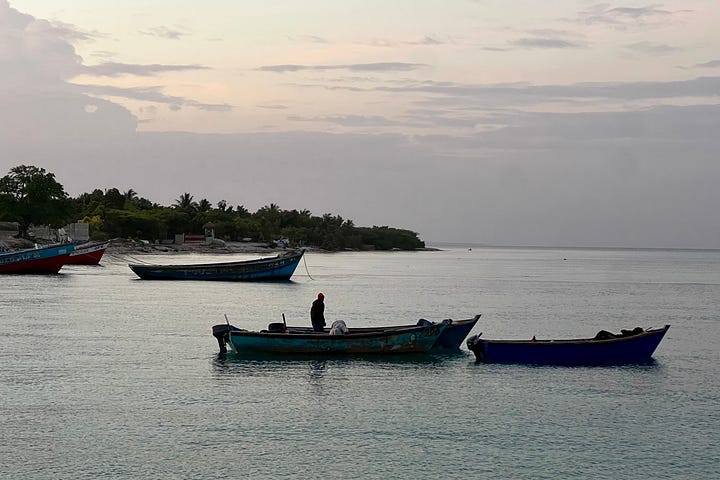
With an unprecedented level of comfort for a boat in its class, the Rendez-vous is much more than just a means of transportation: it symbolizes the evolution of mobility between the South-East of Haiti and the Dominican Republic. It now completes the route from the capital to the border, Marigot being the terminus of the last road still practicable out of Port-au-Prince.
A Vibrant Concert by Nehemie Bastien
On February 6, singer Nehemie Bastien took to the stage to present “À corps et à souffle”, an emotionally charged concert. This tribute to life's struggles combined readings, original compositions and compas covers, much to the delight of an audience caught up in the intensity of the moment.
Accompanied by musicians, the artist, who is also an actress, captivated audiences with her warm voice and unique talent for conveying the depth and sensitivity of her songs.
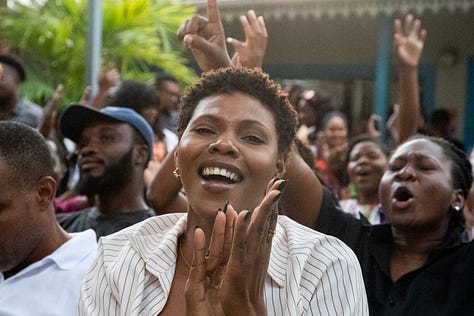



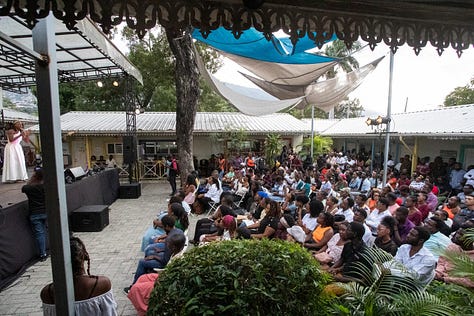
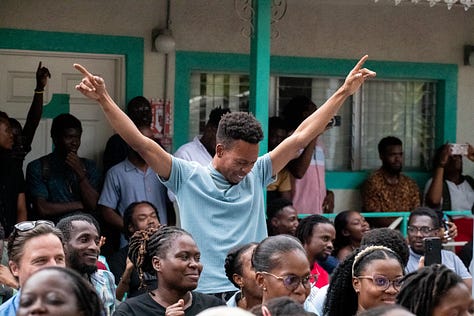
Jacmel: The Spirit of Carnival Lives On
While debate rages over the legitimacy of government funding for such festivities in times of crisis, Jacmel's carnival artists remain determined to keep the tradition alive.
Bands, dancers, actors and mask makers from Jacmel, some of whom have been preparing for months, took to the streets for the last two Sundays in preparation for the carnival on February 23.
However, the festive atmosphere remains permeated by the crisis that is shaking the country. The social criticism that is omnipresent during Carnival is a direct reflection of this, while the notible absence of tourists in the streets over the last four years has left a notorious void.
Music Video of the Week
Kimoun ou ye - Teddy Hashtag feat. L-won
One of the biggest musical hits of the fall finally has its own video. Kimoun ou ye (What kind of person are you?) by Teddy Hashtag established the young singer as one of last year's biggest revelations on the Haitian music scene.
In this song, Hashtag asks a woman: “Tell me who you are?”, and expresses his disbelief at her behavior: “For the past few days, I haven't understood you anymore.” He adds, “I can't find the words to describe everything you've done to me, but if you want to leave me, tell me.”
“My heart breaks easily,” he concludes in the second verse, ”Tell me the truth, don't take me for a fool.”
Kenscoff Withstands the Bullets
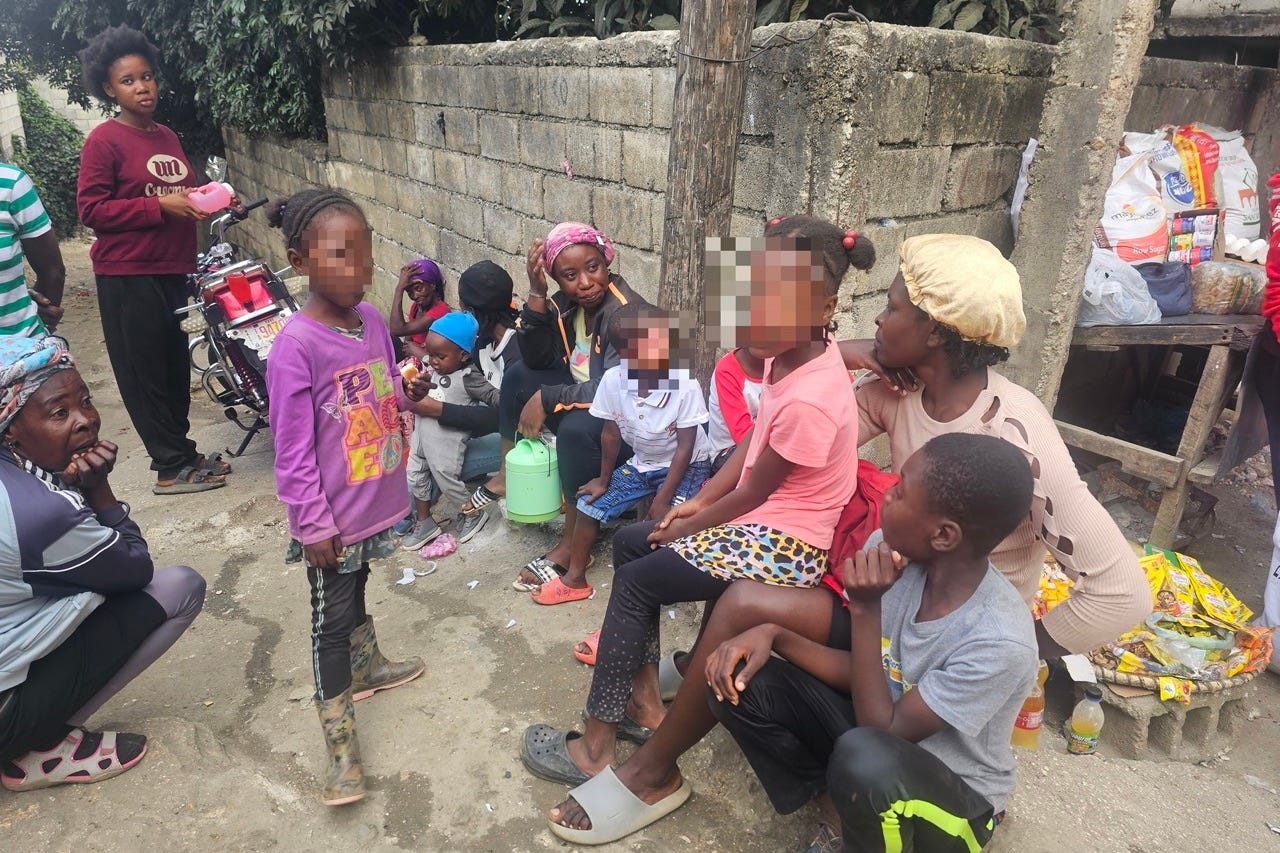
The commune of Kenscoff, located in the mountains above Pétionville, has been living in fear since the end of January. An armed group from Carrefour, further down the mountain, has taken control of several neighboring localities.
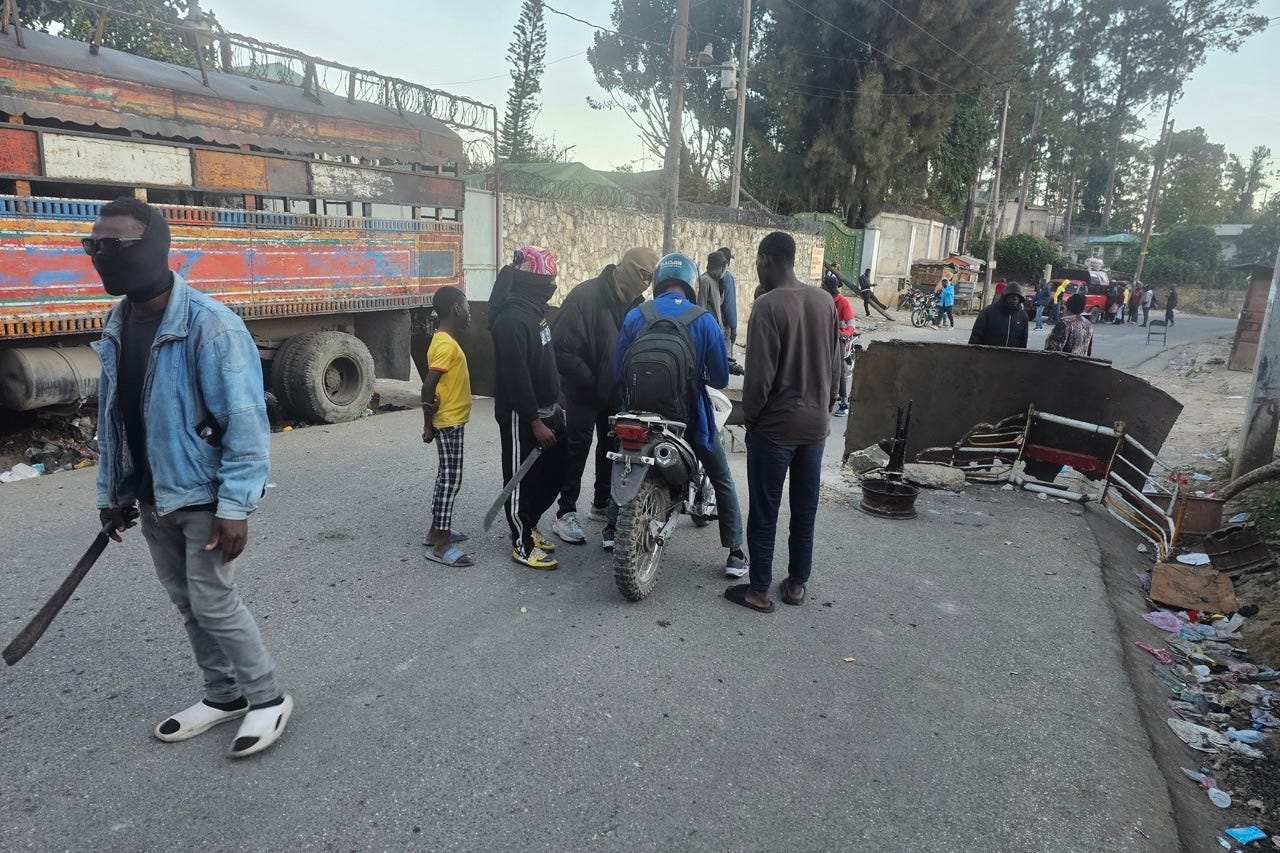
The police and army retaliated, but their intervention came too late and was insufficient to prevent the displacement of more than 3,000 people and the deaths of at least 150, according to human rights organizations. The situation remains critical to this day.
The Haitian Civil Protection organizes food distributions for disaster victims, mainly at the Kenscoff City Hall. Still under the control of the authorities, the city center is crossed by a departmental road that connects Port-au-Prince to the South-East department (Marigot) through the mountains.

Although partially dirt, this road has become a crucial axis in recent months, while the Toussaint-Louverture airport remains closed and all other routes out of the capital are under the control of armed groups. In Kenscoff, the aim of the attackers seems to be once again to take control of this strategic stretch of road in order to impose surveillance and a right of way.

At a Glance : Many artisans at the Fra Zen Ayiti craft fair
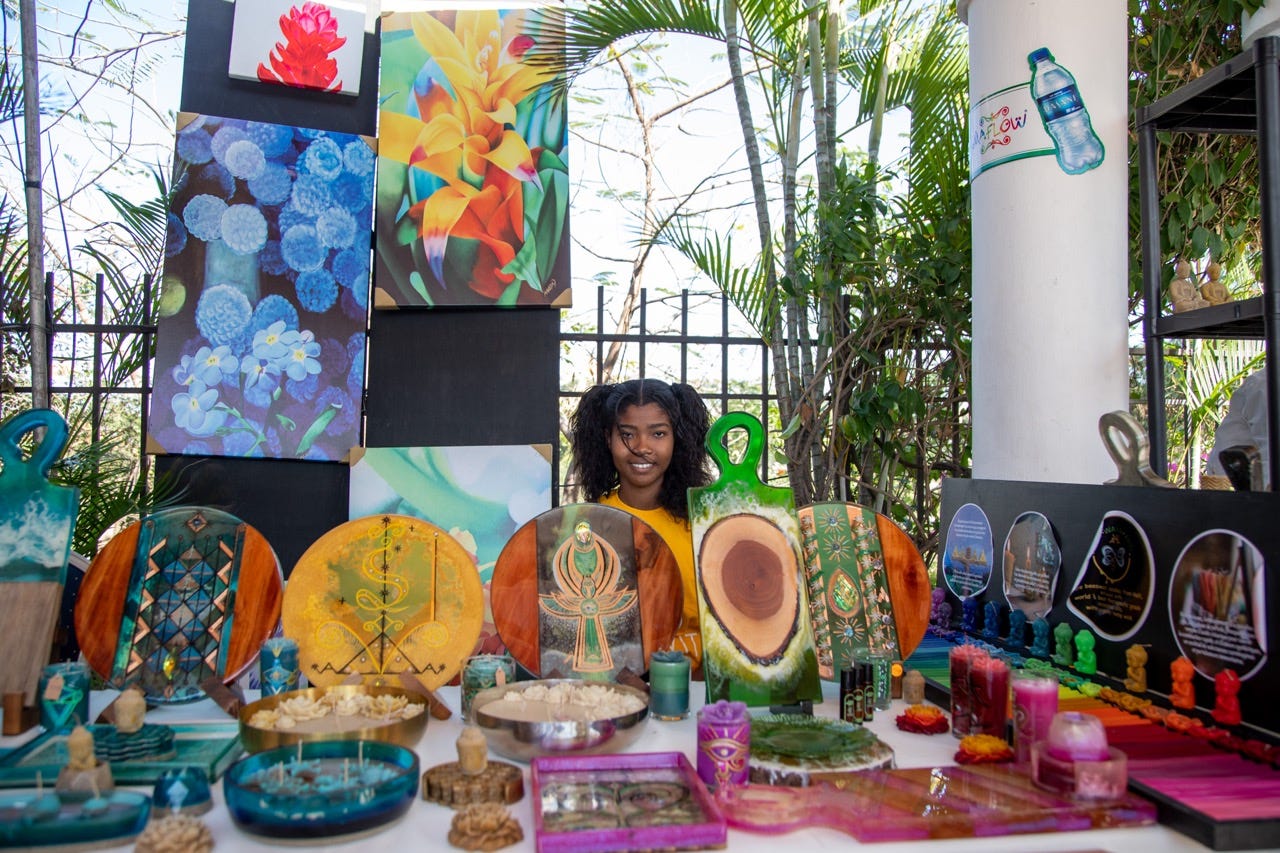
The El Rancho Hotel in Pétionville hosted the Fra Zen Ayiti craft fair on February 1 and 2. Dozens of artisans and cultural entrepreneurs gathered to celebrate the richness of Haitian art and culture.

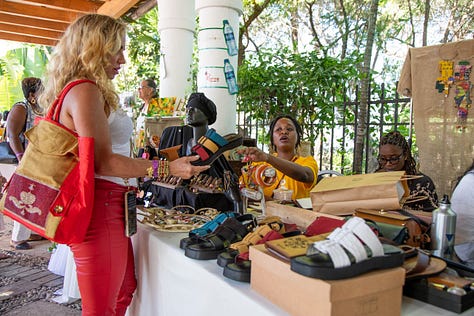
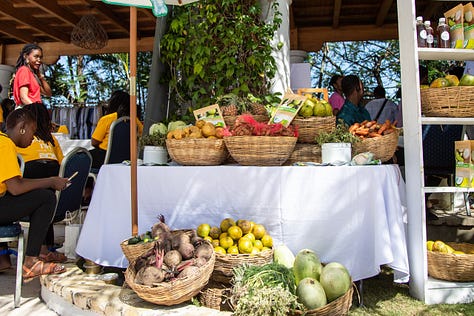
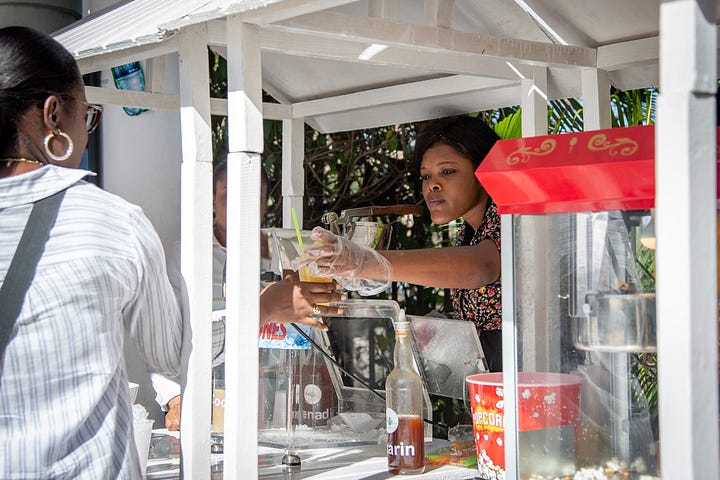
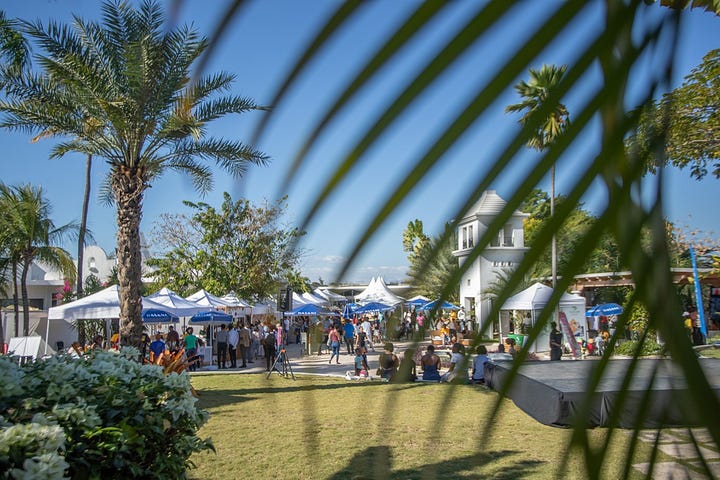
DÈYÈ MÒN ENFO’s team
Photojournalists: Francillon Laguerre, Sonson Thelusma, Andoo Lafond, Milot Andris, Patrick Payin
Editorial board: Etienne Côté-Paluck, Jean Elie Fortiné, Jean-Paul Saint-Fleur
Interns: Wilky Andris, Donley Jean Simon
Special collaboration: Delano Morel, Françoise Ponticq, Stéphanie Tourillon-Gingras, Mateo Fortin Lubin
Media partners: Centre à la Une, J-COM, Nord-Est Info
Institutional partners: Kay Fanm, Mouka.ht
Special thanks to the Fonds québécois pour le journalisme international (FQJI) for its support.
How Does Your Contribution Help?
Your monthly support helps to finance the production and pay the salaries of the DÈYÈ MÒN ENFO staff in the communities of Cité-Soleil, Port-au-Prince and Cayes-Jacmel. In addition, donations are regularly distributed for medical expenses, school fees and other emergencies in these communities.
Press Reviews
Keep reading with a 7-day free trial
Subscribe to HAITI WEEKLY by DÈYÈ MÒN ENFO to keep reading this post and get 7 days of free access to the full post archives.




